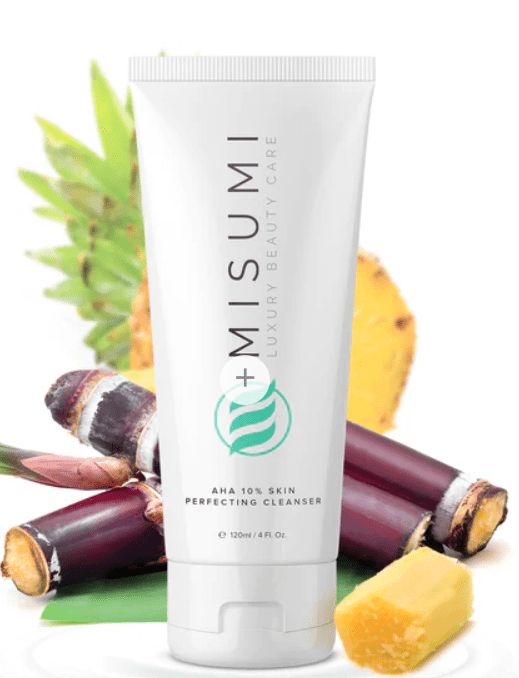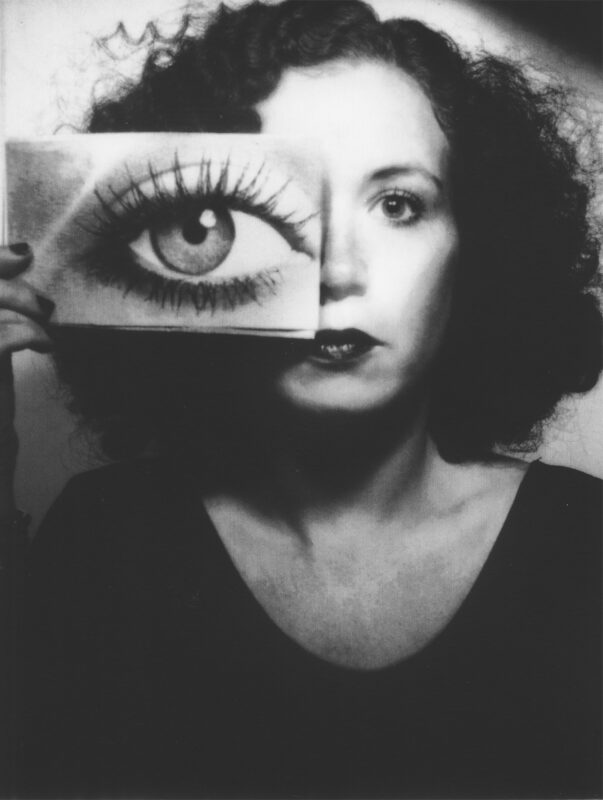
Glycolic acid is the smallest organic acid of the alpha-hydroxy acids (A.H.A.), also known by the name of fruit acid alongside lactic acid and citric acid. Glycolic acid derived from cane, beet, or grape sugar has made a name for itself as the top active component in chemical peels thanks to its exfoliating power, which effectively separates the dead skin cells from the skin’s surface and increases cell renewal.
It also has a smaller molecular size than other A.H.A.s, which gives it a great capacity to penetrate the skin for deeper action. Acne, wrinkles, hyperpigmentation, dullness, and scars can all be treated with products containing glycolic acid, such as Misumi’s best-selling cleanser. So, keep reading to discover why glycolic acid could truly bring out the best version of yourself when it comes to having healthy radiant-looking skin.
Glycolic Acid Skin Care Benefits
A healthy epidermis can be maintained and promoted with the help of glycolic acid. By erasing abnormalities on all levels, this active component offers numerous benefits. It is particularly well known for its keratolytic properties. Glycolic acid’s non-abrasive chemical action will dissolve the bonds that bind dead skin cells to provide efficient and delicate exfoliation.
Skin Appearance Improvement
Known for its exfoliating abilities, glycolic acid controls the amount of sebum produced by oily skin, which prevents the development of defects brought on by the clogging of pores by dead cells.
Therefore, pimples and blackheads are less common since the pores become unclogged and less dilated. Also, this ingredient’s exfoliating effect for the benefit of cell renewal helps to lessen acne scars. These skin abnormalities are hence masked. Hence, glycolic acid encourages the uniformity of skin texture and makes it smooth.
Acne and Skin Blemish Removal
Because of its peeling effect, glycolic acid efficiently eliminates dry, dead, and dull epidermis cells from the surface. So, this exfoliating action promotes the emergence of healthy cells (cell renewal), which brings back the face’s glow and luminosity.
Moreover, it can lessen hyperpigmentation. In fact, depending on the glycolic acid concentration, exfoliation helps remove melanin-rich skin cells from the skin’s surface. The melanocytes or cells that produce melanin are located in the basal layer of the skin, which is the deep layer of the epidermis. This process can even cause cell renewal in this area, so it is possible to lessen age-related or sun-related brown spots (including pregnancy masks) and lighten the skin.
Moreover, it contributes to the production of hyaluronic acid and moisturizes the skin’s stratum corneum. As a result, the skin becomes plumper, softer, and smoother, and the epidermis regains its firmness and complexion’s shine.
Aging Avoidance
In addition to its depigmenting activity against brown spots, which are brought on by an accumulation of melanin and can develop with age, glycolic acid also works on numerous levels to counteract the indications of aging skin.
Glycolic acid can reach the dermis, and in this regard, it can promote the synthesis of hyaluronic acid, a natural humectant responsible for skin hydration that tends to diminish gradually as we age. These two substances are responsible for the firmness and elasticity of the skin, respectively, and weaken with age. As a result, glycolic acid helps the skin stay well-hydrated, firm, and toned while minimizing wrinkles and fine lines.
Scalp Treatment
Glycolic acid has demonstrated its efficacy in hair treatment, particularly for dry, lifeless, and oily hair. In fact, its small molecular size allows glycolic acid to swiftly permeate the hair’s surface to hydrate and renew it. This increases the hair’s resistance by lowering breakage and enhancing its shine.
When there is dandruff, its exfoliating activity allows for deep scalp cleansing, making it easier to get rid of them. This will make the scalp stronger and less prone to flaking.
What Forms of Treatment is it Used For?
Several cosmetic products (serums, lotions, creams, masks, shampoos, etc.) and aesthetic procedures contain glycolic acid (chemical peeling). But not every glycolic acid therapy is the same.
Its concentration and the formula’s overall pH affect its effectiveness. Depending on the skin’s needs, its concentration in cosmetic products ranges from 4 to 10%, allowing for moderate exfoliation to a more intense effect.







